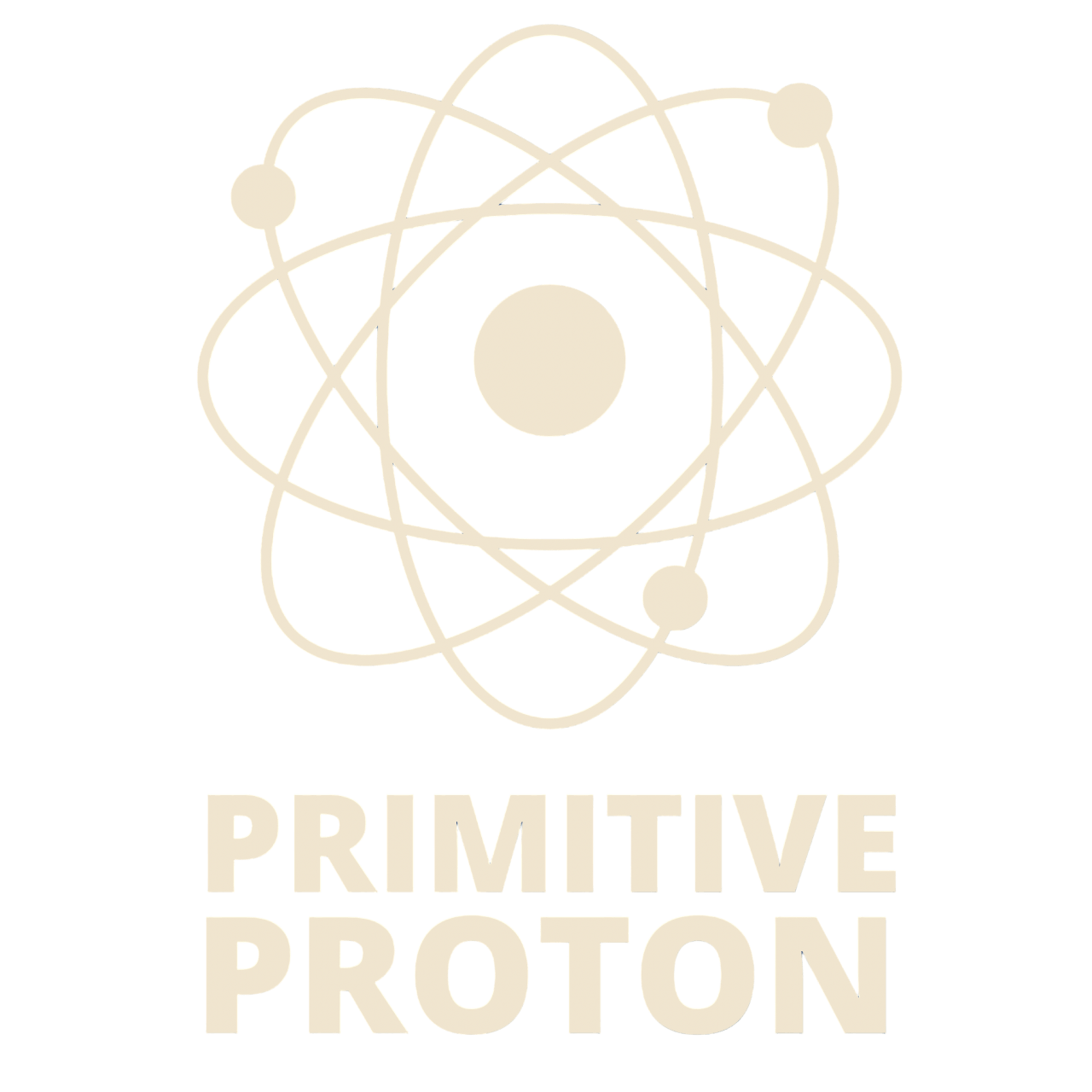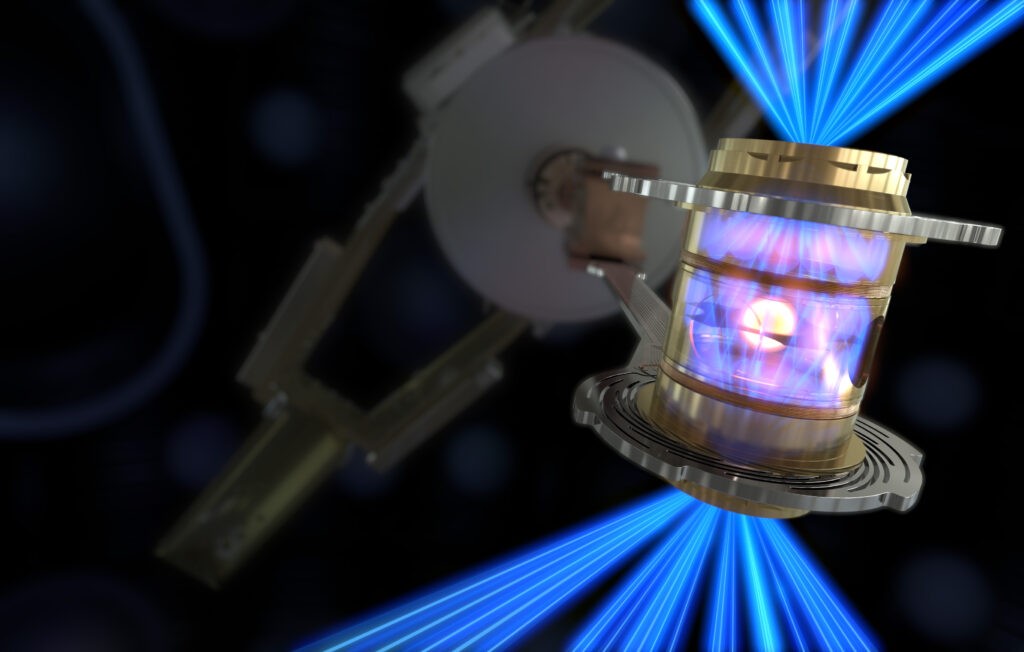Chasing the elusive dream of a net energy gain for decades, scientists finally achieved a breakthrough in nuclear fusion. Researchers at the National Ignition Facility (NIF) in California, United States achieved 54% energy gain as a part of their inertial fusion energy experiment.
Nuclear Fusion: The energy source of the Universe
Sunlight is the source of energy for all the life forms on Earth. It is the result of the continuous fusion reaction going on in its core. Over the evolution of our Universe, the gravitational forces brought together the early hydrogen cloud resulting in the formation of colossal stellar bodies such as our Sun.
The region at the centre of the Sun or any star is highly dynamic, where hydrogen nuclei collide and fuse into heavier elements such as helium. As a result of this process, tremendous amounts of energy get released.

How is energy produced in Nuclear Fusion?
Atoms are seldom at rest – the subatomic particles are in a state of continuous motion which increases at higher temperatures. At the Sun’s core, temperatures reach around 15 million degrees Celsius which is hot enough to start nuclear fusion. The hydrogen atoms reach an extreme level of agitation in this process. Through the extremely high speed obtained due to such high temperatures, they start colliding with each other overcoming the strong repulsive forces between them (the nuclei are positively charged and it is their inherent nature to repel each other).
Two hydrogen atoms fuse to produce a heavier element, helium, and one neutron. The mass of the resulting helium atom is not the sum together of the hydrogen atoms that fused initially. It is observed that some mass gets lost and a huge amount of energy is obtained.
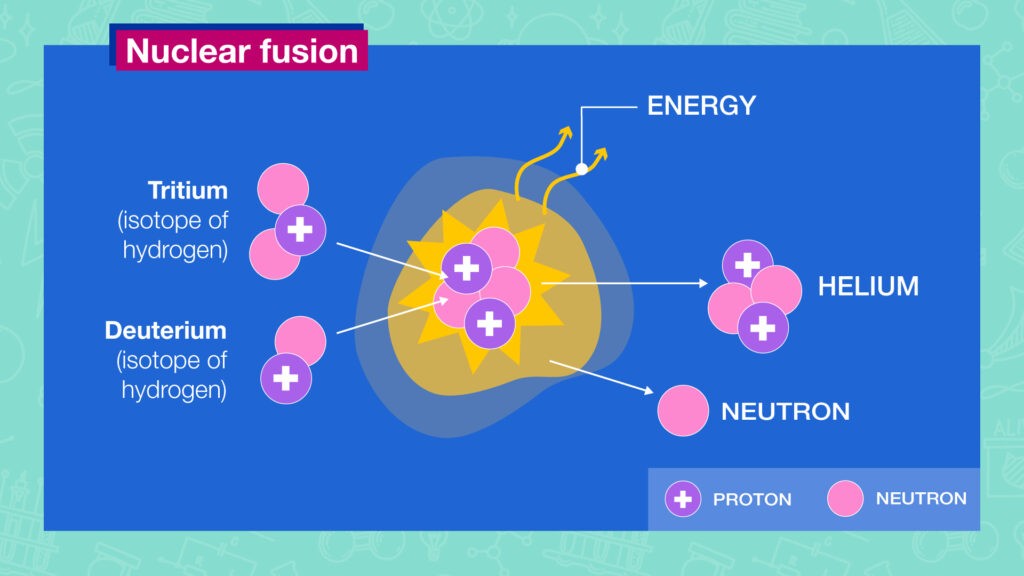
The energy acquired can be explained by one of the fundamental equations of Physics, E=mc². Even though the lost mass (m) is tiny, when it gets multiplied by a huge number (the square of the speed of light – c²), the resulting energy released (E) due to nuclear fusion is tremendously large.
How was the breakthrough achieved in the Laboratory?
The National Ignition Facility (NIF) at Lawrence Livermore National Laboratory (LLNL) in California, US, used the Inertial Confinement Fusion method to conduct the first-ever controlled fusion experiment to achieve a “net energy gain”. The NIF is the size of 3 football fields where powerful laser beams are used to create temperatures and pressures similar to that in the heart of stars.

In the experiment, 2.05 megajoules (MJ) of energy was delivered to the target which resulted in 3.15 MJ of fusion energy output, thus gaining 54% more energy that went as an input. As a part of the scientific set-up, a 1 mm hydrogen isotope capsule was placed inside a hohlraum (a hollow, cylinder-shaped device used as an x-ray furnace).

The researchers then fired 192 high-powered, ultraviolet lasers at the furnace. This caused it to rapidly implode while shrinking its size to just 50 microns in diameter. Such instantaneous change in density and temperature generates a fusion reaction within fractions of a second.
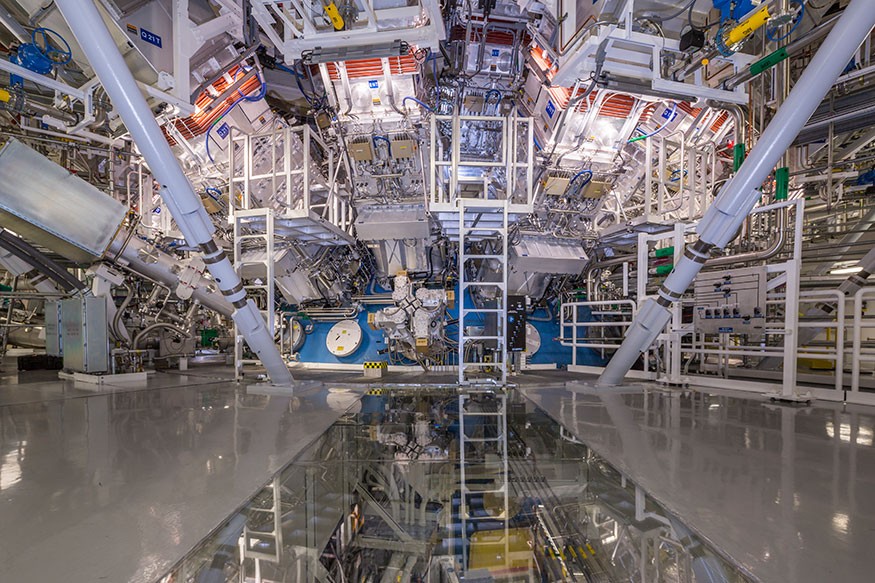
The idea of using lasers to induce fusion in a laboratory first originated in the 1960s. Led by physicist John Nuckolls, a group of trailblazing scientists at LLNL worked on this idea which later became Inertial Confinement Fusion.
This process is called ‘inertial fusion’ because on such fast timescales, the inertia of the fuel (hydrogen isotopes) still being finite cannot push itself apart before the fusion begins.
A better way to comprehend this is through our day-to-day life experience involving a perfume can. When the button is pressed, it rapidly expands and then cools which gives us a sensation of cold. The opposite of this happens when the fusion fuel gets compressed so quickly by applying lasers on them that they tend to heat up. At the centre of the capsule, the temperature reaches 100 million °C which triggers nuclear fusion.
What do the critics have to say about this scientific achievement?
Even though the breakthrough is indeed a scientific accomplishment and deserves to be celebrated, it is not a winning design from a commercial perspective. Certain caveats are worth noting.
First, it took 200 MJs of energy to power those 192 lasers. So, seeing the bigger picture, there cannot be an overall energy gain until powering lasers can be handled in some other ways that use much less energy.
Secondly, fuel pellets are made of diamond and are machined to be as smooth as possible – neither of which can be cheap.
Third, NIF was not originally conceived for commercial fusion energy but was designed as the largest laser program to propagate fusion energy research.
Fourth, a power plant that operates on the NIF concept, will have to increase the frequency of the existing 1 shot per day to 10 shots per second. A million capsules would need to be designed, filled, positioned, blasted, and disposed of daily.
The aforementioned factors involving high cost, engineering challenges, and supply chain issues are deterrents to mass productionize nuclear fusion energy and so it may not be available to everyone on Earth any time soon.
Advantages of Fusion Energy
With the ever-increasing demand for energy and equally less supply day by day, a new large-scale, sustainable, and clean energy is gravely needed.
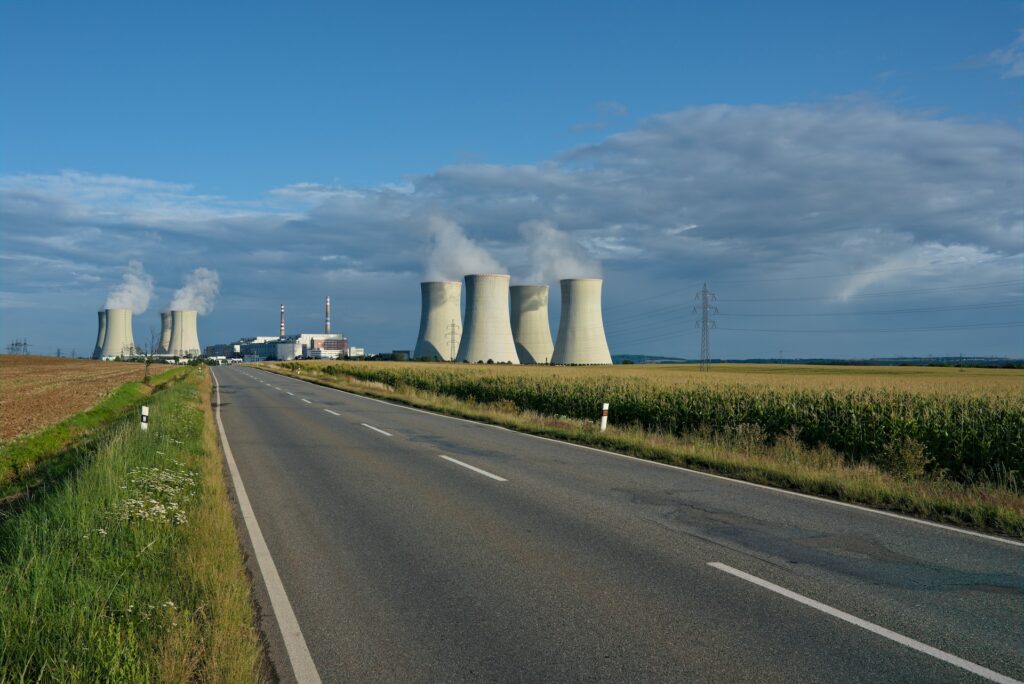
Fusion energy comes with the following list of advantages:
- Carbon-free energy: Fusion reaction does not release substances like carbon dioxide or other greenhouse gases which are a major component of climate change. On the contrary, its by-product, Helium, is inert and non-toxic.
- Sustainability: The major elements of fusion are Deuterium and Tritium. Deuterium can be easily distilled from all forms of water and is abundantly present in seawater. Tritium is produced most effectively when neutrons interact with Lithium in nuclear fission reactors. The only significant challenge is to recover it reliably. Land-based reserves of Lithium can power fusion plants for around 1000 years while sea-based reserves would suffice for millions of years.
- No meltdown: Unlike nuclear reactors whose malfunctioning can cause huge health and life hazards, fusion has negligible chances of a meltdown. In case anything goes wrong, the plasma within the reaction cools within seconds and the reaction stops, thus no chain reaction can occur.
- Abundant energy: Controlled fusion reaction can produce around four million times more energy than by burning fossil fuels and four times as much as a fission reaction (at equal mass). If done properly, it holds sufficient power to provide clean electricity to cities and industries.
- Limited risk of nuclear proliferation: Fusion does not involve fissile (able to undergo nuclear fission) elements like uranium and plutonium. Even though Tritium is radioactive, it is not fissile.
Closing Thoughts
Even though at present, we are far behind commercializing fusion energy, considering the pace at which technology and engineering progress, the next few decades hold a great deal of promise. Widely considered an alternative to fossil fuels, and being a clean and virtually limitless source of energy, fusion energy could contribute significantly to bringing order back to nature, by combating climate change and helping achieve sustainability goals.
Kindly subscribe to our newsletter to be informed about the articles as soon as they are published.
This article is authored by Abhinav Singh.

Subscribe to Primitive Proton Newsletter
Sign up to keep up to date with the latest news and curated blogs in the world of space, science, and technology.
Your email is never shared with anyone. You can opt out anytime with a simple click!
WE PRIORITISE PRIVACY.
